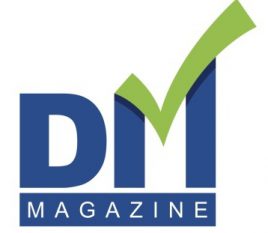 By Vivian Tam
By Vivian Tam
The hiring landscape is complex and continues to evolve in ways that present new and unexpected challenges for businesses, including those in the marketing and creative field. Despite larger ongoing economic uncertainty, businesses continue to have important functions that require skilled talent, and projects and objectives that are moving forward.
Though job postings and interviews continue, the path from vacancy to offer has grown longer and more complex, and this is impacting marketing and creative departments and professionals alike. Delays in approvals, evolving expectations, and added scrutiny have all made it harder for companies to move quickly and confidently.
New research from Robert Half shows that 95 percent of marketing and creative hiring managers say their hiring process now takes longer than it did just two years ago. And it’s not just one step slowing things down; evaluating applications to determine who to interview, conducting thorough reference checks, and writing and posting job applications have all become more time-consuming.
At the same time, 84 percent of M&C managers say they’re still struggling to find the skilled talent they need to support key business priorities. And even when they do, mistakes are still being made that lead to compounding repercussions. The most common mistakes they report making in the hiring process that led to bad hires are failing to communicate clear job descriptions and role duties (71 percent) and not properly assessing technical skills and qualifications (58 percent).
Our latest research shows that when they make a bad hire, it takes marketing and creative managers more than 3 weeks on average to recognize their mistake, and the subsequent performance issues are resulting in an average of 12 hours of wasted productivity every week that the wrong hire stays in the position. Beyond that, and because of it, more than 6 in 10 managers surveyed reported that one of the biggest costs of a bad hire is that it led to turnover on their teams, thereby starting the long hiring cycle all over again.
The risks of both rushing through the process and taking too long are real and harmful. When due diligence is compromised either because of lack of time and resources for thorough assessments or because businesses have critical roles they need filled immediately, major mistakes can happen. Yet when hiring takes too long, remaining employees often absorb the extra workload, which can lead to burnout, lower morale and delayed project timelines. The longer a role remains open, the more pressure builds, and, in some cases, top candidates walk away in favour of faster-moving opportunities. In addition, projects may have gaps, new initiatives can lose momentum, and revenue might even be lost, especially if the open role is needed to fill a core skills gap on the team.
Why is this happening?
In part, it’s a response to economic uncertainty. To reduce risk, some companies are adding more approval layers, stricter compliance protocols, and multiple stakeholder interviews, all of which slow down the process. At the same time, businesses are being increasingly selective as they feel the leverage shifting more in their favour after a few years of an extremely tight labour market, and are waiting for the “perfect” candidate, even if it means losing valuable time and talent in the process.
These interconnected challenges are forcing many marketing and creative organizations to rethink their hiring strategies. To navigate today’s hiring cycles and still make strong talent decisions that are thorough without compromising efficiency, companies should focus on these core strategies:
• Streamline decision-making. Involving too many voices can stall momentum. Clearly define hiring timelines, identify essential decision-makers, and align must-have criteria, including job expectations and compensation, before launching the search. This includes determining hiring managers’ availability and blocking off windows for interviews ahead of time where possible, to avoid endless scheduling back-and-forth. It also means determining maximum compensation abilities to help speed up negotiations after an offer has been made. Structured interviews and consistent evaluation frameworks can improve speed and confidence.
• Reframe what the ideal candidate looks like. Don’t let perfection get in the way of progress. Look for high-potential candidates who demonstrate agility, curiosity, and strong interpersonal skills. A balanced interview approach, mixing technical and behavioural questions that also assess soft skills and company cultural fit, can help hiring managers avoid these common pitfalls.
• Build flexibility into your workforce model. Contract and consulting professionals are a powerful resource to engage with. They bring specialized skills, help ease workloads on permanent staff, and keep projects moving. Contract roles also offer a low-risk opportunity to assess long-term fits, while giving professionals the chance to build experience and expand their networks.
• Consider working with a trusted talent solutions firm. Specialized recruiters and talent solutions firms can provide pre-evaluated skilled candidates that fit your business and its needs. With access to top talent, including those passively open to new opportunities and not actively applying, they can be the gateway you need to find the right fit.
Ultimately, companies need to strike a balance between due diligence and decisiveness. Waiting too long can be just as costly as hiring the wrong person. By refining the hiring process and embracing agility, businesses can reduce risk, maintain momentum, and build stronger teams ready to take on what’s next.
For job seekers, flexibility is equally important. In a slower hiring market, contract roles, new certifications or adjacent industries can open doors and strengthen your long-term career path.
Vivian Tam is Practice Director, Marketing and Creative at Robert Half, Canada.
